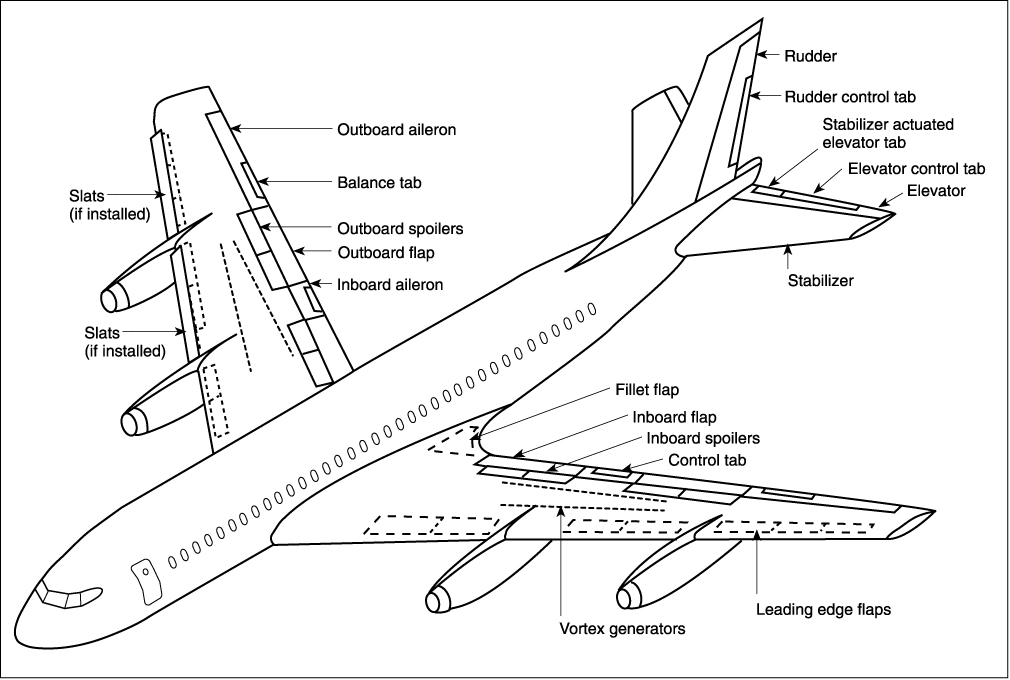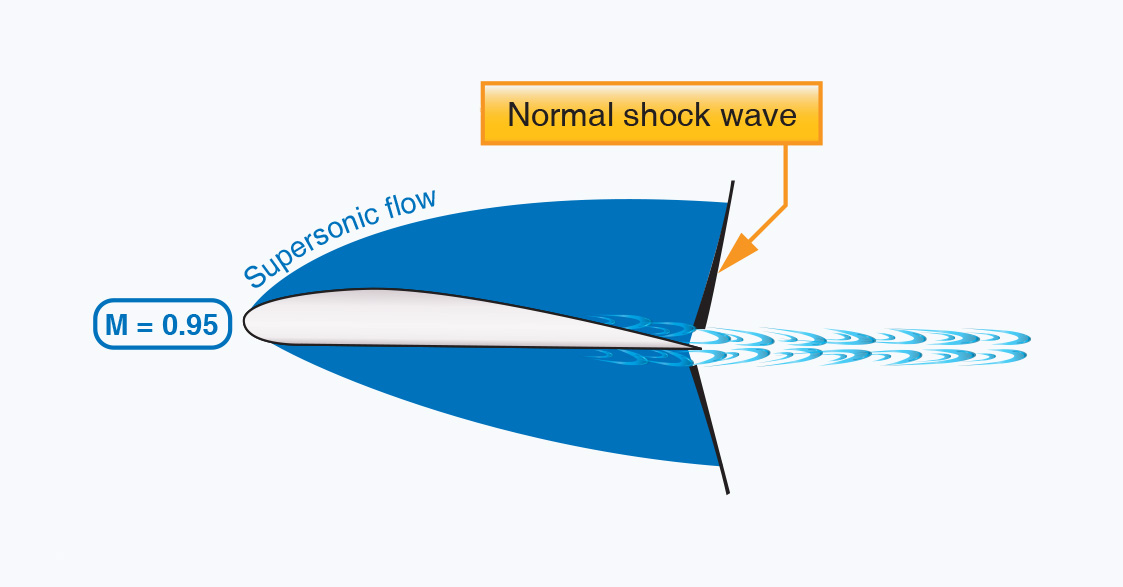This week on the Learn to Fly Blog the theme has been aerodynamics, and rather than stick to Private Pilot level aeronautical information we’ve hit you with some “graduate level” knowledge. Today, I thought it would be interesting to take a look at the primary flight controls of a typical commercial airliner. Looking at the image below you’ll notice right off the bat that while there’s a few more controls it’s not all that different than the training aircraft you might be flying in today.
One of the biggest differences to point out revolves around the way the flight controls are moved. Because of the high air loads, it is very difficult to move the flight control surfaces of jet aircraft with just mechanical and aerodynamic forces. So flight controls are usually moved by hydraulic actuators. Flight controls are divided into primary flight controls and secondary (or auxiliary) flight controls. The primary flight controls are those that maneuver the aircraft in roll, pitch, and yaw. These include the ailerons, elevator, and rudder. Secondary (or auxiliary) flight controls include tabs, trailing-edge flaps, leading-edge flaps, spoilers, and slats.
Roll control of most jet aircraft is accomplished by ailerons and flight spoilers. The exact mix of controls is determined by the aircraft’s flight regime. In low speed flight, all control surfaces operate to provide the desired roll control. As the aircraft moves into higher speed operations, control surface movement is reduced to provide approximately the same roll response to a given input through a wide range of speeds.
Many aircraft have two sets of ailerons—inboard and outboard. The inboard ailerons operate in all flight regimes. The outboard ailerons work only when the wing flaps are extended and are automatically locked out when flaps are retracted. This allows good roll response in low speed flight with the flaps extended and prevents excessive roll and wing bending at high speeds when the flaps are retracted.
Spoilers increase drag and reduce lift on the wing. If raised on only one wing, they aid roll control by causing that wing to drop. If the spoilers rise symmetrically in flight, the aircraft can either be slowed in level flight or can descend rapidly without an increase in airspeed. When the spoilers rise on the ground at high speeds, they destroy the wing’s lift which puts more of the aircraft’s weight on its wheels which in turn makes the brakes more effective.
Often aircraft have both flight and ground spoilers. The flight spoilers are available both in flight and on the ground. However, the ground spoilers can only be raised when the weight of the aircraft is on the landing gear. When the spoilers deploy on the ground, they decrease lift and make the brakes more effective. In flight, a ground-sensing switch on the landing gear prevents deployment of the ground spoilers.
Vortex generators are small (an inch or so high) aerodynamic surfaces located in different places on different airplanes. They prevent undesirable airflow separation from the surface by mixing the boundary airflow with the high energy airflow just above the surface. When located on the upper surface of a wing, the vortex generators prevent shock-induced separation from the wing as the aircraft approaches its critical Mach number. This increases aileron effectiveness at high speeds.
As you progress through the ranks of aviation and begin flying larger aircraft you will start noticing some of these secondary flight controls installed on your aircraft. But many of the training aircraft like the Cessna 172’s, Piper Archers, or piston powered aircraft you might be flying today won’t have secondary controls such as spoilers installed. The majority of the time these aircraft are just not large enough, heavy enough or fast enough that spoilers would be an effective or beneficial flight control. It is however beneficial to gain experience in the knowledge of these flight control systems as it will help you later on in training when you merge your private and professional aerodynamics lessons into practice.
For more advanced information on aerodynamics check out our collegiate level textbook, Aerodynamics for Aviators.






